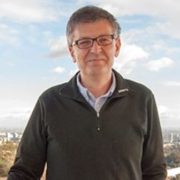TAH interview David Saunders, The National Gallery and The British Museum, London
What are the most important research questions in TAH?
Saunders’ idea of the term technical art history is an approach to objects that deals primarily with their material aspects, taking these material aspects, it rather than the object’s context and its historical, archaeological or aesthetic aspects, as a starting point. It is then possible to look at how the object’s materiality relates to other aspects that are perhaps more familiar to the art historians. Most important for technical art history is research into material aspects that enriches the understanding of an object and the culture it emerged from. For Saunders, research questions that address how a knowledge of the material aspects of an object can enrich our understanding of both the object and the culture in which it was created are, therefore, most significant. These research themes often pose questions such as: does this object conform or differ to what we expect; what does examination and analysis tell us; how do the results advance our understanding of the object; how can they make comparisons between things at a material level; is this object unique because it is not what we expect – or because we have failed to understand something? Some of these questions can best be answered by research in contemporaneous literature or by the further research in other collections and on other materials.
Do you consider technical art history a sub-field of art history?
Saunders is of the opinion, that technical art history is certainly not a sub-field of art history. He thinks, rather that it is a new definition of an existing, if vague, field; what technical art historians do has been done for a long time without being called technical art history. To him, the idea of calling it technical art history is perhaps to take a subject that has been more about the applying conservation and science to the study of objects by looking at their materiality and trying to get greater involvement of art historians, curators and others who deal with the aesthetic, historical, social and political context of objects. Technical art history is related to other fields as material and cultural studies, archaeology or anthropology, especially when it comes to objects outside paintings and fine art. Technical art history has grown up with focus on paintings. In the last decade in particular, the field has opened itself to other objects, which are made for more utilitarian reasons. The research questions for these objects are slightly different, the investigations on them are perhaps not best described as technical art history, and the outputs are more social, historical, anthropological, ethnographic or archaeological. While with paintings you might be asking: why are people portrayed in this way; why were these colours used? With the other objects it might be more about their cultural use in general. But even with these objects it’s important that people from different disciplines are working together.
Is TAH is ‘an enhanced and more scientific’ connoisseurship?
Ainsworth’s definition of technical art history is good, yet too narrow. Technical art history is a field to exchange ideas with people from many different backgrounds. Saunders disagrees with Ainsworth’s statement in the sense that he thinks that the definition is too narrow. He is of the opinion, for Ainsworth, coming into technical art history from an art historical background, it is a very good definition. She is a curator for Dutch paintings and a specialist for using infrared reflectograhpy to understand their production. She is an art historian, improving her connoisseurship through technical examination. But for Saunders, there are many other important contributors who come from different approaches – like him, coming from a different root and not being an art historian. He would consider technical art history to be an area where all these people can meet and where they can cross-fertilize their ideas.
What do you see as the major challenges in TAH education?
In their education, students should stick to the traditional fields like art history or conservation. Saunders thinks it’s a good idea to establish modules in master programmes as this course or courses for people who are already trained professional to give them an understanding of how their field is related to other fields. For Saunders it is more important to strengthen the links between the traditional fields as art history, conservation, archaeology or anthropology rather than to create a new discipline. With a master in technical art history you could end up trying to put into one person little bits of everything without forming a round, fully educated person. As he said before, nobody can become an expert in everything. You couldn’t find enough time in the program because you would need to teach people documentary sources as well as the doing of reconstructions, quite a lot of science but an awful lot of art history as well, what he thinks is almost impossible to achieve in an appropriate way. Collaboration and anything that helps to extend networks can be very useful. Close collaboration within the museum as well as between museums and universities can be very useful to get a new perspective on a particular subject.


